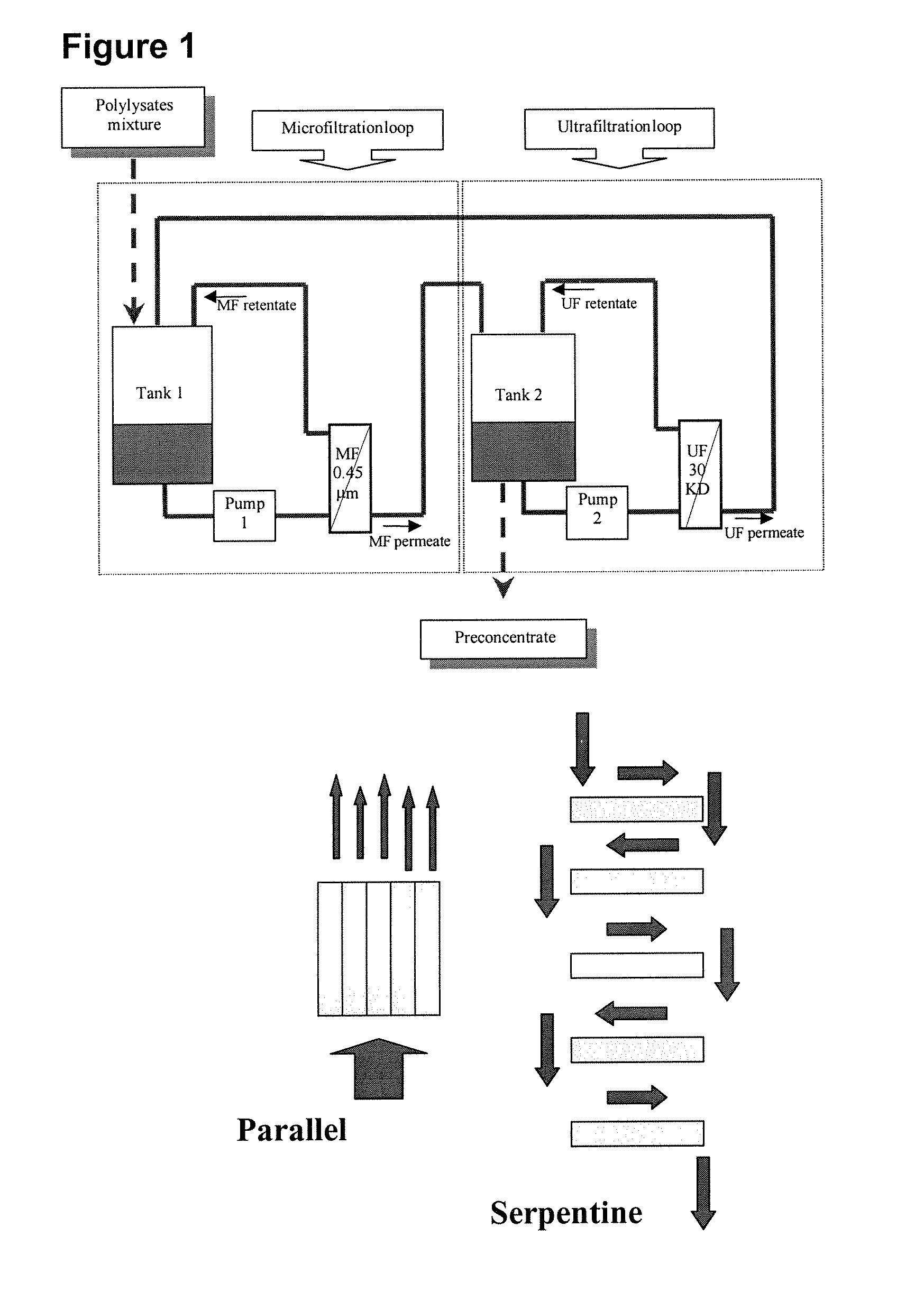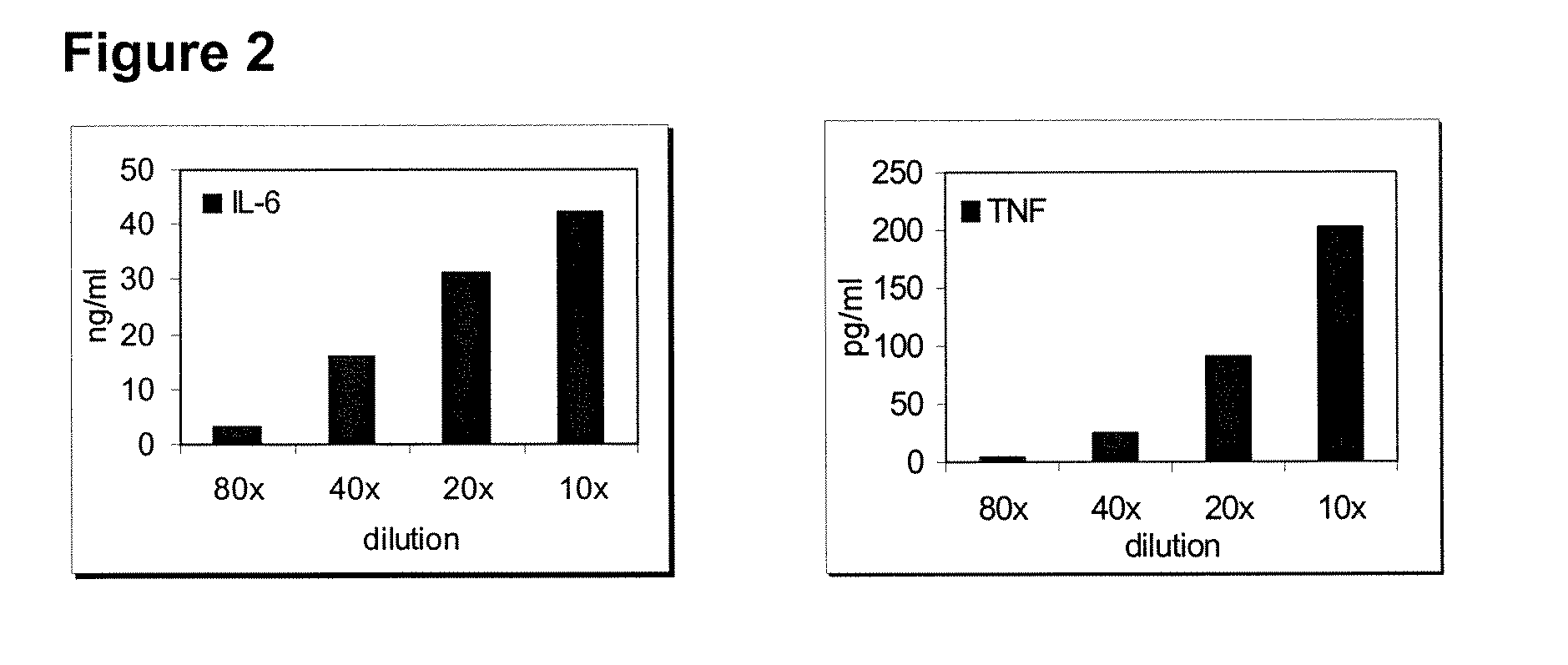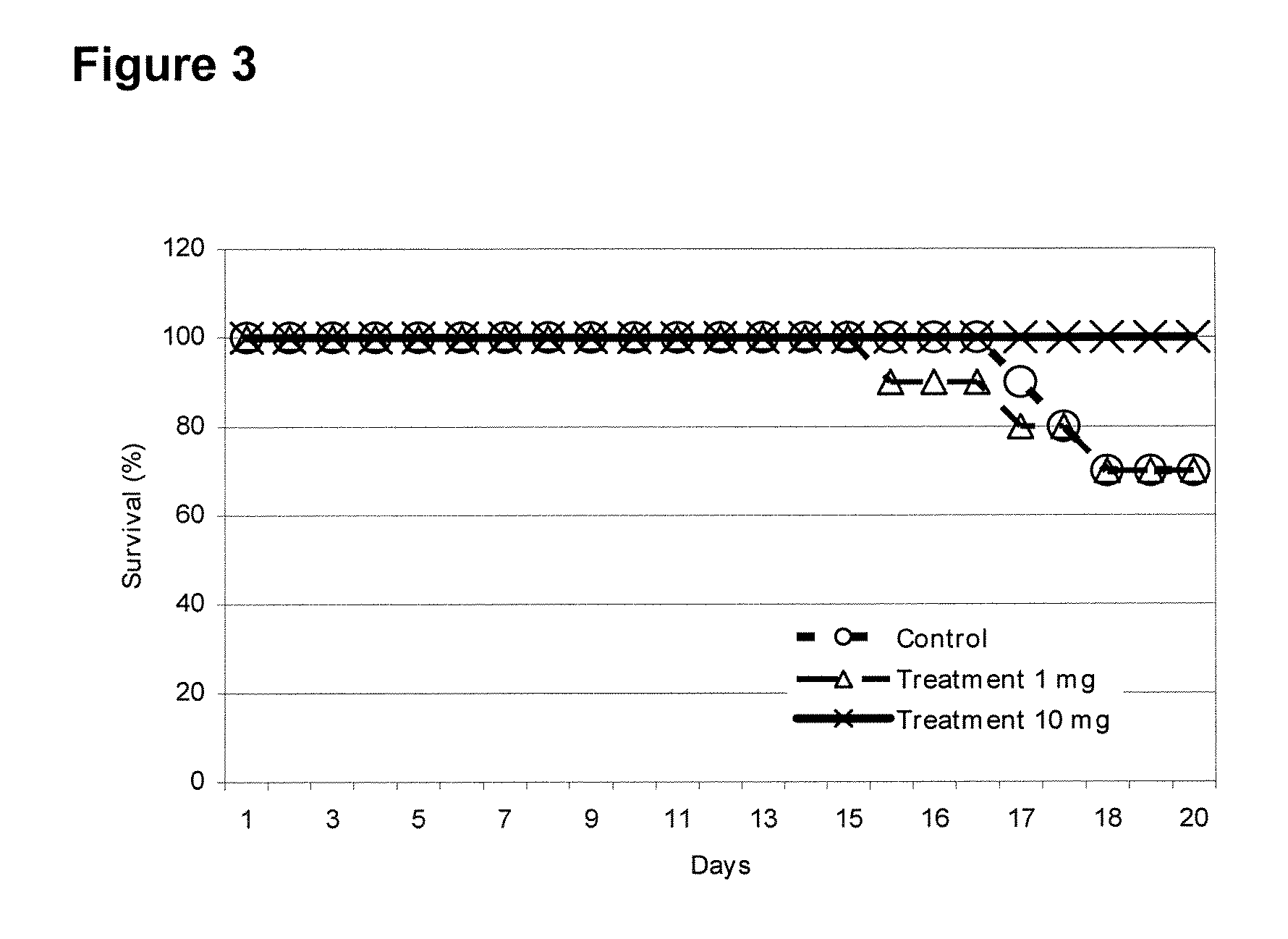Bacterial extract for respiratory disorders and process for its preparation
a technology for respiratory disorders and extracts, applied in the field of extracts from bacterial strains, can solve the problems that extracts are too allergenic to be safely administered to patients, and achieve the effect of maintaining consistent safety and efficacy
- Summary
- Abstract
- Description
- Claims
- Application Information
AI Technical Summary
Benefits of technology
Problems solved by technology
Method used
Image
Examples
working examples
Example 1
Bacterial Cultures
example 1.1
Culture of Haemophilus Influenzae NCTC 8467 Initial Culture Conditions
[0067]Culture media was prepared by dissolving in purified water the following components: Sodium chloride: 3 g / L; Sodium monohydrogen phosphate: 2 g / L; Sodium acetate: 0.5 g / L; Soya peptone 40 g / L; Glucose: 6 g / L; Inosine: 0.1 g / L; Calcium chloride: 0.02 g / L; Potassium chloride: 0.1 g / L; Sodium bicarbonate: 0.6 g / L; Sodium pyruvate: 0.06 g / L; Metal solution (copper sulfate: 3 mg / l; iron chloride: 830 mg / l; zinc sulfate: 860 mg / l; sulfuric acid: 1.1 mg / L): 0.5 mL / L; Hemin: 25 mg / l; NADH (β-nicotinamide adenine dinucleotide disodium salt reduced trihydrate) 25 mg / l. After dissolution, the pH was adjusted to 7.2. After sterilizing the media, small Erlenmeyer flasks were individually inoculated with the content of frozen vials (containing 1.5 mL of frozen bacteria) and incubated at 37° C. for 8 hours. Then aliquots of this culture were transferred to larger Erlenmeyer flasks containing 150 mL of culture media, and in...
example 1.2
Staphylococcus Cultures
[0071]Culture Conditions in Erlenmeyer flasks
[0072]Culture media for Staphylococcus aureus 049 (StAu 049), Staphylococcus aureus I-050 (StAu 050), Staphylococcus aureus I-051 (StAu 051), Staphylococcus aureus I-052 (StAu 052), Staphylococcus aureus I-053 (StAu 053) and Staphylococcus aureus I-054 (StAu 054) was prepared by dissolving in purified water the following components: Sodium chloride 2 g / L; Sodium monohydrogen phosphate 2 g / L; Sodium acetate 0.5 g / L; Soya peptone 40 g / L; Glucose 6 g / L. Then 0.012 L of media was inoculated with 1.5 mL of frozen bacteria. The culture was incubated at 37° C. for 7 hours under stirring at 180 rpm and pH 6.9. Successive culture steps from 12 to 1000 mL were performed.
Culture Conditions in Prefermenters
[0073]The same media as the preceding step was prepared for prefermenters, but with addition of polypropylene glycol 0.06-0.10 mL / L. Media was sterilized in situ at 123° C. for 30 min. 1000 ml of culture from the previous ste...
PUM
 Login to View More
Login to View More Abstract
Description
Claims
Application Information
 Login to View More
Login to View More - R&D
- Intellectual Property
- Life Sciences
- Materials
- Tech Scout
- Unparalleled Data Quality
- Higher Quality Content
- 60% Fewer Hallucinations
Browse by: Latest US Patents, China's latest patents, Technical Efficacy Thesaurus, Application Domain, Technology Topic, Popular Technical Reports.
© 2025 PatSnap. All rights reserved.Legal|Privacy policy|Modern Slavery Act Transparency Statement|Sitemap|About US| Contact US: help@patsnap.com



